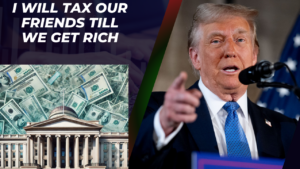
Reciprocal Concessions in Trade Negotiations: International trade agreements are generally based on mutual concessions. When the United States negotiates a trade deal, it often agrees to reduce its own import tariffs to gain access to foreign markets. In return, its trading partners may maintain or even impose higher tariffs on U.S. goods. This reciprocity is part of the bargaining process, where each side makes concessions in areas that are less critical to its overall economy while securing benefits in others.
Focus on Market Access and Competitiveness: U.S. trade policy has traditionally prioritized securing broad access for American products in overseas markets. While it might seem that accepting higher foreign tariffs on U.S. exports is a disadvantage, the overall arrangement is intended to open new markets and create growth opportunities for U.S. companies. In many cases, even if a partner country retains a higher tariff on certain U.S. goods, the agreement may also include reductions in non-tariff barriers (such as regulatory hurdles or quotas) that improve the competitiveness of those goods overseas.
Historical Tariff Structures and Free Trade Ideals: The U.S. has a long history of advocating for free trade, a stance that is reflected in its relatively low domestic import tariffs. Over the past several decades, the U.S. has shifted much of its trade policy toward reducing tariff barriers, both at home and abroad. In this context, agreeing to lower import duties is seen as part of a broader strategy to encourage international commerce, even if it means accepting that some trading partners continue to protect their own industries with higher tariffs on U.S. exports.
Negotiated Rules and Sector-Specific Considerations: Trade agreements often involve detailed, sector-by-sector negotiations. While the overall agreement might allow for higher duties on certain U.S. goods in foreign markets, there may be accompanying provisions that benefit American producers. These can include dispute resolution mechanisms, intellectual property protections, or rules that limit the use of non-tariff barriers. In many cases, the net benefit of the agreement when considering all these factors can outweigh the cost of any higher applied tariffs on specific exports.
Strategic and Political Considerations: Finally, trade agreements are not negotiated solely on the basis of tariff levels. They are part of a broader strategic approach that includes political, economic, and security considerations. By engaging in these agreements, the U.S. also helps shape international economic rules and alliances, which can have long-term benefits that extend well beyond the immediate tariff implications.
In Summary
It will be safe to say the United States’ approach to trade agreements reflects a balancing act: it sacrifices some tariff advantages on exports in order to gain broader market access, secure favourable terms in other areas, and reinforce its overall commitment to free trade. This trade-off, while it might appear uneven when viewed solely through the lens of tariff rates, is designed to achieve a net positive effect for the U.S. economy in a highly interconnected global marketplace.

